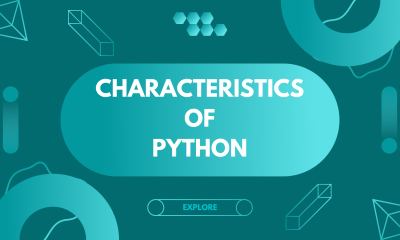Uncategorized
Beyond Accuracy: The Importance of Loss Function in AI

Loss functions are an integral part of machine learning, playing a critical role in training models to make accurate predictions. In this guest post, we’ll delve deep into loss function, exploring their importance, types, and practical applications. By the end of this guide, you’ll have a solid understanding of how loss functions work and their significance in the machine-learning landscape.
Table of Contents
- What Are Loss Functions?
- The Importance of Loss Functions
- Common Types of Loss Functions a. Mean Squared Error (MSE) b. Cross-Entropy Loss c. Hinge Loss
- Selecting the Right Loss Function
- Custom Loss Functions
- Loss Functions in Deep Learning
- Loss Functions in Unsupervised Learning
- Challenges and Pitfalls
- Conclusion
1. What Are Loss Functions?
In machine learning, a loss function, also known as a cost function or objective function, measures the error between predicted values and actual target values. The primary purpose of a loss function is to guide the model during the training process, allowing it to adjust its parameters to minimize this error. In other words, it quantifies how well a machine learning model is performing.
2. The Importance of Loss Functions
Loss functions serve several crucial purposes in machine learning:
- Optimization: Loss functions are the compass that guides optimization algorithms to find the best model parameters.
- Quantification of Errors: They provide a numeric value that indicates how far off the model’s predictions are from the actual target values.
- Comparison of Models: Loss functions enables the comparison of different models, helping data scientists select the most appropriate one for a given task.
- Regularization: Some loss functions incorporate regularization terms to prevent overfitting, promoting model generalization.
3. Common Types of Loss Functions
a. Mean Squared Error (MSE)
MSE is perhaps the most widely used loss function for regression tasks. It calculates the average squared difference between predicted and actual values. MSE punishes large errors more than smaller ones, making it sensitive to outliers.
Mathematically, MSE is represented as:
���=1�∑�=1�(��−�^�)2
MSE=
N
1
∑
i=1
N
(y
i
−
y
^
i
)
2
Where
�
N is the number of data points,
��
y
i
is the actual value, and
�^�
y
^
i
is the predicted value.
b. Cross-Entropy Loss
Cross-entropy loss, often used in classification problems, measures the dissimilarity between predicted class probabilities and actual class labels. It punishes the model more for confidently incorrect predictions.
The binary cross-entropy loss is given by:
�(�,�^)=−1�∑�=1�(��⋅log(�^�)+(1−��)⋅log(1−�^�))
L(y,
y
^
)=−
N
1
∑
i=1
N
(y
i
⋅log(
y
^
i
)+(1−y
i
)⋅log(1−
y
^
i
))
c. Hinge Loss
Hinge loss is predominantly used for support vector machines (SVMs) and is suited for binary classification tasks. It encourages a model to classify instances with a margin of separation correctly
.
The hinge loss is expressed as:
�(�,�^)=1�∑�=1�max(0,1−��⋅�^�)
L(y,
y
^
)=
N
1
∑
i=1
N
max(0,1−y
i
⋅
y
^
i
)
4. Selecting the Right Loss Function
Choosing the appropriate loss function is critical for a machine learning task’s success. The choice depends on the problem type (regression, classification, etc.) and the characteristics of the dataset. Understanding the trade-offs and nuances of different loss functions is essential to make an informed decision.
- For regression tasks, MSE is a safe choice, but other loss functions like Huber loss or log-cosh loss may be more suitable for specific cases.
- For classification, cross-entropy loss is widely used, but hinge loss or log loss (used in logistic regression) might be better for certain situations.
5. Custom Loss Functions
In some cases, more than predefined loss functions may be required. Data scientists can design custom loss functions tailored to the specific requirements of a problem. Custom loss functions enable the incorporation of domain knowledge and the fine-tuning of a model’s behavior.
6. Loss Functions in Deep Learning
In deep learning, loss functions are crucial for training neural networks. Common loss functions for deep learning tasks include categorical cross-entropy for multiclass classification and mean squared error for regression. The backpropagation algorithm adjusts network weights based on the gradients of these loss functions.
7. Loss Functions in Unsupervised Learning
While loss functions are often associated with supervised learning, they are also relevant in unsupervised learning. Clustering algorithms, such as k-means, use loss functions like the sum of squared distances to determine the quality of cluster assignments.
8. Challenges and Pitfalls
Loss functions are not without challenges. They can be sensitive to outliers, and selecting the wrong loss function can hinder a model’s performance. Additionally, overfitting can occur if loss functions are not complemented with appropriate regularization techniques.
Conclusion
Loss functions are the backbone of machine learning and deep learning algorithms. They quantify the errors between predictions and actual values, guiding models towards optimal parameter settings. The selection of the right loss function depends on the problem type and dataset characteristics, and sometimes custom loss functions are necessary for specialized tasks.
Understanding loss functions is a fundamental step towards becoming proficient in machine learning, enabling data scientists to fine-tune models and make accurate predictions in diverse domains. As the field of machine learning continues to advance, the role of loss functions remains as crucial as ever, contributing to the development of more intelligent and capable algorithms.






